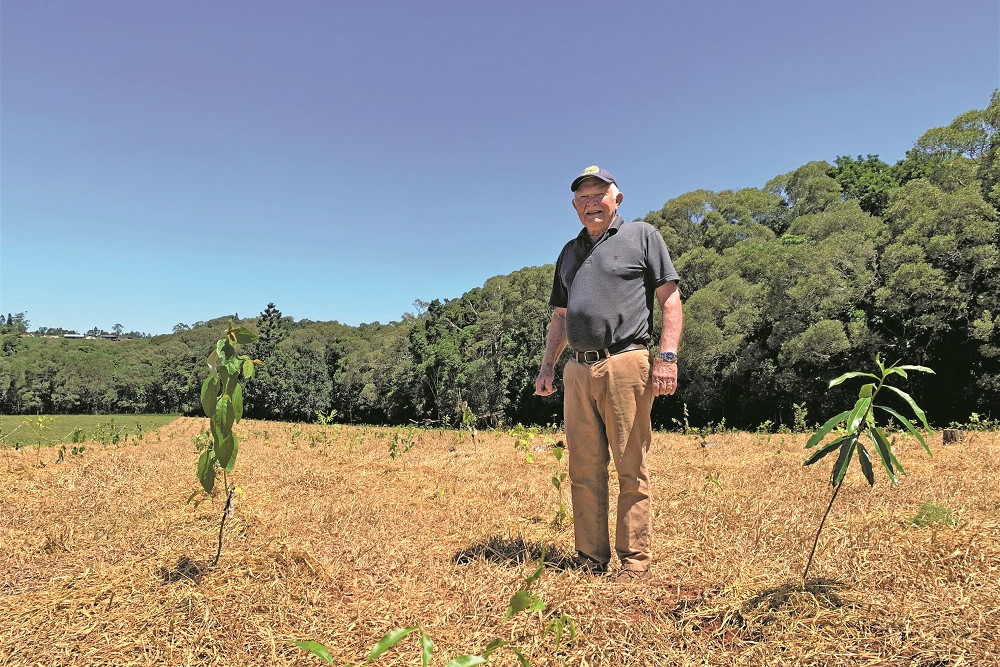On The Land
10 May, 2022
Massive tree planting to create wildlife corridors
NATIONAL park areas at Crater Lakes and Wooroonooran are being connected following a community revegetation blitz on private land.

NATIONAL park areas at Crater Lakes and Wooroonooran are being connected following a community revegetation blitz on private land.
Tablelands residents Elaine and Michael McAuliffe have joined a growing number of private landholders working to conserve key forest habitats in the Wet Tropics. Located in a priority wildlife corridor used by endangered rainforest species including the southern cassowary, the couple received a grant through Terrain NRM to revegetate their property.
The grants are part of Terrain’s Building Rainforest Resilience project, which supports willing landholders and threatened species recovery groups to improve or protect important habitat. Activities include revegetation, weed management and habitat protection.
This project is supported by Terrain through funding from the Australian Government’s National Landcare Program. Terrain’s rainforest leader Tony O’Malley said the program aimed to reconnect and buffer large and fragmented areas of habitat. “We are working closely with threatened species recovery teams, whose members advise us on the grants process,” he said. “The Cassowary Recovery Team, for example, has identified six priority corridors in the Wet Tropics and much of the land is outside protected national park or world heritage area. We offer landholders in those corridors resources for conserving and improving their patches of rainforest.”
The McAuliffes had already planted more than 6000 trees on their former dairy farming block since buying it in the 1980s. They used Terrain’s grant money to engage local contractor Mark McCaffrey for more revegetation work with support from landcare group Trees for the Evelyn and Atherton Tablelands (TREAT).
“Lots of the revegetated parts of the property now look like natural forest,’’ Mr McAuliffe said. “Unfortunately I got some bad advice back in the ’80s and there was a section where I planted 1000 Caribbean pines, which aren’t the right thing at all, and they all blew over in a cyclone. “For years I’d been thinking about filling in the area where the pines fell in, so when I found out I could apply for a Rainforest Resilience Grant I grabbed the opportunity with both hands. “I’m 80 years old now and reveg is hard work on the knees and back so I’m glad to have the support. I was inspired by the work being done on the western side of Lake Eacham, connecting the Crater Lakes and Wooroonoonan.”
TREAT volunteers recently planted 2500 trees on the McAuliffe’s property. “For decades TREAT has been working with landholders to revegetate degraded lands and create corridors for wildlife on the Tablelands,’’ Mr O’Malley said. “Much of the work done through the Rainforest Resilience grants builds on work by community organisations like TREAT.”
Terrain’s Indigenous Partnerships Officer Michael Morta said it was good to be involved in the tree planting event as both a Nadjon-Jii person and a Terrain staff member. “Traditional owners are keen to be involved in projects like this in their traditional country and that also contribute to their local communities,” he said.
Mr McAuliffe said it was amazing to see what a community of people could do in a short period of time. “I just like nature. I’m no mad greenie, but I think the world’s gone mad with land clearing and I believe that every little contribution – including mine – helps. It’s a beautiful part of the world up here and it deserves to be looked after.”


